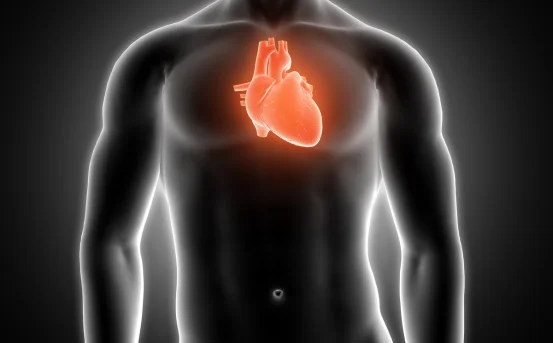Introduction
Aortic valve surgery is a life-saving heart procedure designed to repair or replace a malfunctioning aortic valve, one of the heart’s four major valves responsible for controlling blood flow from the heart to the rest of the body. The aortic valve plays a crucial role by opening and closing with each heartbeat, ensuring that oxygen-rich blood is efficiently pumped from the left ventricle into the aorta and then distributed to vital organs and tissues. When this valve becomes narrowed (aortic stenosis), leaky (aortic regurgitation), or otherwise dysfunctional due to age, infection, congenital defects, or degenerative diseases, it impairs the heart’s ability to function properly. If left untreated, a malfunctioning aortic valve can lead to heart failure, arrhythmia, or sudden cardiac death.
Types of Aortic Valve Surgery, including various techniques such as open-heart surgery and minimally invasive approaches like Transcatheter Aortic Valve Replacement (TAVR), aim to restore proper valve function, improve quality of life, and extend life expectancy. Understanding the different types of aortic valve surgery is crucial for patients facing valve issues.
Types of Aortic Valve Surgery
- Surgical Aortic Valve Replacement (SAVR) :- This is the traditional and most commonly performed type of aortic valve surgery. In surgical aortic valve replacement, the patient is placed under general anesthesia, and an incision is made through the chest to access the heart. The surgeon temporarily stops the heart and places the patient on a heart-lung bypass machine to maintain circulation. The diseased valve is then removed, and a new valve either mechanical or biological is sewn into place. Mechanical valves are made of durable materials and last a lifetime but require lifelong blood thinners. Bioprosthetic valves, often made from pig or cow tissue, are more natural and do not need long-term anticoagulants but may wear out over time. SAVR is suitable for patients with severe valve disease and is often combined with other procedures like coronary artery bypass grafting if needed.
- Transcatheter Aortic Valve Replacement (TAVR) :- TAVR is a minimally invasive alternative to traditional surgery, often recommended for patients who are at high or intermediate risk for open-heart surgery. In this procedure, the surgeon inserts a catheter—usually through the femoral artery in the groin—and guides it to the heart. A collapsible replacement valve mounted on a stent is delivered through the catheter and positioned within the existing damaged valve. Once in place, it expands and begins functioning immediately. TAVR does not require a chest incision or cardiopulmonary bypass and is associated with shorter hospital stays and quicker recovery times. This method has revolutionized aortic valve treatment, especially in elderly patients or those with other medical conditions that increase surgical risk.
- Minimally Invasive Aortic Valve Surgery :- This approach involves performing a valve replacement or repair through smaller incisions than those used in traditional open-heart surgery. Typically, the surgeon accesses the heart through a partial sternotomy (a small cut in the upper part of the chest) or a right mini-thoracotomy (an incision between the ribs on the right side). The procedure otherwise follows the same basic steps as SAVR, including valve excision and replacement. Minimally invasive techniques aim to reduce blood loss, lessen postoperative pain, and shorten recovery time. However, not all patients are candidates for this approach, especially those with complex valve or cardiac conditions that require a more comprehensive view of the heart.
- Ross Procedure :- The Ross procedure is a specialized form of valve surgery often performed in younger patients, including children. In this operation, the patient’s diseased aortic valve is removed and replaced with their own pulmonary valve (which usually faces less stress and is in better condition). A donor pulmonary valve is then placed in the pulmonary position. This technique has the advantage of allowing the new aortic valve to grow with the patient and function naturally without the need for anticoagulants. The Ross procedure offers excellent long-term results in properly selected patients but is more technically demanding than standard replacement procedures and is not widely available at all centers.
- Aortic Valve Repair :- In some cases, especially when the valve is leaking (aortic regurgitation) rather than narrowed, repair rather than replacement may be an option. Aortic valve repair involves reshaping or reinforcing the patient’s existing valve to restore normal function. Techniques may include removing excess tissue, adjusting valve cusps, or inserting a supportive ring. Valve repair has the advantage of preserving native tissue, avoiding prosthetic-related complications, and eliminating the need for blood thinners. However, it is less commonly performed than replacement, as it is only suitable in certain anatomical and pathological conditions. Long-term success depends on the type of defect and the skill of the surgical team.
- Rapid Deployment Aortic Valve Replacement :- Rapid deployment valves are a newer innovation aimed at simplifying surgical valve replacement. These valves are designed to be implanted more quickly and with fewer sutures, potentially reducing operative time and risk. This type of valve is often used in minimally invasive surgeries where access to the heart is more limited. The valve, once inserted, expands into place with the aid of a balloon or self-expanding mechanism. While promising, this approach is still being studied to understand long-term outcomes compared to traditional valves.
- Homograft and Allograft Valve Replacement :- In certain complex or infected cases, such as when endocarditis (infection of the heart valves) is involved, surgeons may use a homograft (a donated human aortic valve) or an allograft (valve from a cadaver) to replace the diseased valve. These grafts are more resistant to infection and may integrate more naturally with the body’s tissue. Though not commonly used for routine cases, they play a critical role in reconstructive procedures where artificial or tissue valves are not suitable.
- Valve-in-Valve Procedures :- This refers to a TAVR procedure performed inside a failing bioprosthetic valve that was previously surgically implanted. It is a valuable option for patients who have undergone prior valve replacement but whose bioprosthetic valve has worn out or become dysfunctional. Rather than undergoing another open-heart surgery, the patient can receive a new valve delivered via catheter inside the old one. Valve-in-valve TAVR provides a safer alternative for high-risk patients needing redo operations.
Conclusion
Aortic valve surgery has evolved significantly, offering patients a variety of surgical options tailored to their specific health needs and risks. From the conventional open replacement to less invasive and high-tech interventions like TAVR and the Ross procedure, the landscape of aortic valve treatment is broader and more personalized than ever before.
Each type of aortic valve surgery comes with its own set of benefits, risks, and suitability criteria. While surgical aortic valve replacement remains a standard option with proven long-term results, newer procedures such as TAVR have opened the door for treating patients who were once deemed inoperable. Decisions about the best surgical approach should be made collaboratively by the patient and the heart team, based on clinical evaluation, imaging studies, patient preferences, and overall health status.
Early diagnosis and intervention are key to successful outcomes in aortic valve disease. With advancements in surgical techniques and improved post-operative care, most patients can expect a good quality of life and excellent heart function following surgery. Whether you are a patient, caregiver, or healthcare provider, understanding the types of aortic valve surgery is essential to navigating this critical aspect of cardiac care.























